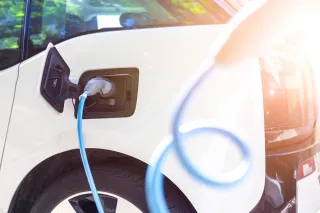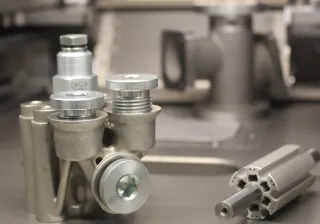VTT is a coordinator of the research project SOMA, which is focused on the upscaling of soft magnetic alloys tailored for AM with minimized amount of critical raw materials. Furthermore, it will demonstrate a manufacturing route where the restrictions of conventional manufacturing methods do not apply enabling groundbreaking changes in designs and consequently leading to lightweight and material efficient solutions for, e.g., future e-mobility.

Electromechanical devices in the heart of transportation
Transportation sector is responsible for 24% of global carbon dioxide (CO2) emissions. Electric vehicles are a response to reduce the CO2 emissions. For instance, the International Energy Agency forecasts that the number of on road electric vehicles will grow from 7 million (year 2019) to 140 million by 2030. Due to the scope and scale of the transformation, research activities especially on electric vehicle battery technologies have been significant in the last few decades. Besides batteries, new concepts of electrical machines and devices are currently a subject of great interest and development. Overall, according to ReportLinker, global automotive motor market size was about 26 B€ (USD 31 bn) in 2019.
The research and development of electrical machines is driven by, e.g., regulations, application specific requirements and material scarcity/availability. First, regulations concerning energy efficiency are becoming tighter and tighter, and for instance in European Union, the next regulations for a tighter eco-design for electric motors are being implemented in July 2021 and in July 2023. Further, electrical machines of mobile applications naturally have to be energy efficient but also compact and easily integrable into structures and systems. In a global scale, the major trend of electrification of everything (not only transportation) is creating a huge demand for certain raw materials also critical raw materials (CRM). All these factors combined are creating an unparalleled demand for renewed electromechanical devices with enhanced performance, lower material consumption and reduced life cycle cost. This demand is pushing the manufacturers and research community to explore non-conventional designs and manufacturing methods and novel materials.
Additive manufacturing gives freedom to component design and reduces raw material consumption
Additive manufacturing (AM, also known as 3D printing) is a technology that grows three-dimensional products one thin material layer at a time. It holds potential for revolutionizing electromechanical industry and electrical machines. For instance, AM technologies are opening up new possibilities for realizing novel magnetic circuit designs. The magnetic circuits of traditionally manufactured electrical machines are based on stacked electrical steel sheets for reduced eddy current losses. However, this sheet lamination process restricts the design possibilities of components. AM enables manufacturing of 3D optimized designs, e.g. in terms of weight and material consumption. Because of the nature of the process, AM produces less waste than traditional manufacturing. By using novel soft magnetic materials in electromechanical components, also the usage of CRM decreases.
Earlier studies have shown that by tailoring material compositions together with optimized processing parameters and particularly, with optimized post-treatments, high performance soft magnetic components can be manufactured by AM. It has been shown that through topology optimization, the weight of an electrical machine can be decreased significantly without compromising the other key characteristics. By AM, we target to increase material efficiency by 30% as compared to conventional subtractive manufacturing.
Future challenges
VTT is a coordinator of the research project Lightweight solutions for e-mobility by AM of soft magnetic alloys (SOMA), which is focused on the upscaling of soft magnetic alloys tailored for AM with minimized amount of critical raw materials. Furthermore, it will demonstrate a manufacturing route where the restrictions of conventional manufacturing methods do not apply enabling groundbreaking changes in designs and consequently leading to lightweight and material efficient solutions for, e.g., future e-mobility.
VTT has researched combining additive manufacturing and electrical machines since 2014. The concept from powder synthesis to topology optimized, additively manufactured soft magnetic components has been proved in laboratory scale. The future challenge is the upscaling of the soft magnetic powder production and manufacturing processes to the scale required by industrial production.
The project will be run from 1 January 2021 to 31 December 2023 and it involves five partners. Consortium combines powder, manufacturing, and electrical machine experts. VTT Technical Research Centre of Finland Ltd is the project coordinator and contributes to research activities. Components from powder products are validated by Centro Ricerche Fiat S.C.p.A. CRF (Italy) and Siemens AG (Germany). Gemmate Technologies (Italy) designs and optimizes components. Powder commercialization is led by Elkem (Norway). The project is funded by EU EIT Raw Materials. The project aims to develop soft magnetic materials and manufacturing technologies towards upscaling and finally industrial production.
More information about the project:
https://www.soma-eit.eu/

